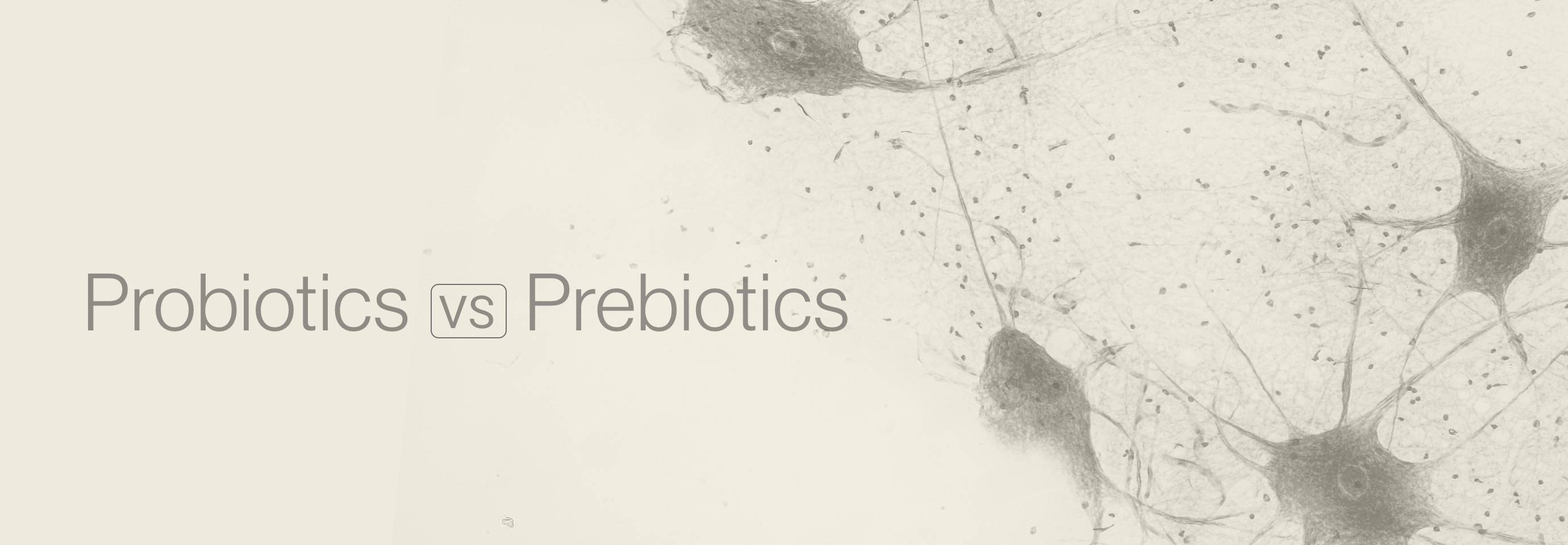Probiotics vs Prebiotics

Did you know? There are not just one, but three types of beneficial bacteria proven to support our long-term health.
Although probiotics may be the Beyoncé of the bacteria trio, prebiotics and probiotics are more than just the backing singers. To clear things up, we spoke to our in-house experts about the difference between probiotics and prebiotics, as well as lesser known postbiotics.
So, what are probiotics, prebiotics and postbiotics? Where can we find them, and why do we need them? Our team of skin researchers unpack everything you need to know, including the best sources for gut health and skin radiance. Let’s dive in.
What’s the difference between probiotics and prebiotics?
What are probiotics?
We call probiotics ‘the workers’, as they are live beneficial bacteria that work hard to support gut health. Their benefits have been spotlighted by scientists in recent years, and have been found to address many different health and skin concerns. So, choosing the right types is key.
A key benefit of probiotics is their power to support digestive symptoms including bloating, constipation, and diarrhoea.² But increasing research also shows that probiotics can help skin concerns, including eczema, dry, ageing skin, and damage from UV rays.
Specific probiotics have been shown to increase skin’s ceramide production, which helps keep acne at bay ³.
Probiotic foods
We like to take a ‘food first’ approach to nutrition – getting as many nutrients as you can from food and helping fill the gaps with supplements. Here’s our list of probiotic foods to try in your diet.
Kimchi
Sauerkraut
Tempeh
Miso
Yoghurt with live cultures
What are prebiotics?
Prebiotics act as ‘the fuel’ - nutrients that are digested by the gut microbiome. They consist of non-digestible fibre that promotes a healthy gut environment.
As humans, we can’t digest fibre, but our gut microbiome can. These types of fibre provide healthy nutrients to help support digestion and immune function. There has also been increasing research that prebiotics can support specific skin concerns such as rosacea and acne, characterised by an impaired skin barrier.¹
Prebiotic foods
Here’s our list of prebiotic foods to add to your diet.
Legumes
Beans
Peas
Asparagus
Bananas
Berries
Garlic
Onions
Ginger
Fennel
What are postbiotics?
Postbiotics are bioactive compounds; natural substances found in food or other sources that have a biological effect on living organisms. Our gut bacteria digest vegetable fibres and produce nutrients such as vitamin K and B vitamins.
Research shows postbiotics can support immunity and digestion, decrease inflammation, and benefit skin health ⁴.
Imagine probiotics acting like bees working in the hive. Pollen is like a prebiotic that the bees use to make honey, which is like a postbiotic.
To sum up...
So, what have we learnt?
Evidence shows that prebiotics, probiotics and postbiotics all come with an array of benefits from digestion and immunity to supporting common skin concerns including rosacea, acne, ageing and dry skin.
To reap some of these benefits, we recommend you consume foods that are high in fibre (listed above – screenshot and keep), as well as fermented foods for gut health and skin radiance.
You’re officially an expert. You put the ‘pro’ in probiotics.
Sources:
¹ Prebiotics: Definition, types, sources, mechanisms and clinical applications. National Library of Medicine. .D, Davari, M,Negahdaripour, I Karimzadeh, M Seifan, M Mohkam, S Masoumi, A Berenjian, YGhasemi. March 2019.
² Probiotics for the Prevention of Antibiotic-Associated Diarrhea in Outpatients—A Systematic Review and Meta analysis. National Library of Medicine. C Butler. October 2017.
³ Functional role of probitoics and prebiotics on skin health and disease. Multidisciplinary Digital Publishing Institute. V Lolou, M Panayiotidis. May 2019.
⁴ Postbiotics – A step beyond pre-and probiotics. National Library of Medicine. J Zolkiewicz, A Marzec, M Ruszcynski, W Feleszko, July 2020.
